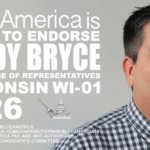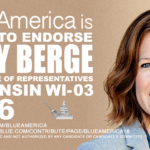I was going to write about the infuriating SCOTUS ruling on abortion clinic buffer zones earlier, but I got distracted. This Dahlia Lithwick story at Slate does an excellent job, so here it is:
This morning, the Supreme Court handed down two unanimous decisions (I am inventing the word faux-nanimous effective immediately to account for Scalia’s very dissent-y concurrences) in two of the most hotly contested cases of the term. The first is Canning, the recess appointments case. In the second, the court held that Massachusetts’ 2007 abortion clinic buffer zone law, which requires that abortion opponents stay 35 feet away from clinic entrances, violates the First Amendment. Writing for the whole court, Chief Justice John Roberts says that the law, which makes it a crime to knowingly stand on a “public way or sidewalk” within 35 feet of an entrance or driveway to any “reproductive health care facility,” is unconstitutional.
The Massachusetts law was passed after two clinic workers were shot and killed by a gunman at abortion clinics in Brookline in 1994. The challengers in McCullen want to approach women seeking abortions, and said the buffer zone thwarted their ability to offer face-to-face counselling. The federal appeals court found the zone to be a reasonable “time, place, and manner” regulation. Today, the high court reversed that decision. From now on it looks like these buffer zones outside clinics are presumptively unconstitutional. There are similar regulations at clinics in Portland, Maine; Pittsburgh; California; and elsewhere. They are modeled on the buffer zones that were approved in the high court’s decision in a 2000 case, Colorado v Hill. That case was not overruled today.
While the decision is not monumentally awful in ways some progressives most feared, and certainly affords the state substantial latitude in its future attempts to protect women seeking abortions from harassment, more than anything it seems to reflect a continued pattern of “free speech for me but not for thee” or, at least, “free speech for people who think like me,” that pervades recent First Amendment decisions at the court. More importantly, I don’t know where to locate this ruling in the burgeoning doctrine of “the right to be let alone” that Justices Alito and Thomas and Breyer have espoused, nor do I know how to reconcile it with the court’s persistent second-rate treatment of any speech that threatens to harass the justices themselves.
Right now, the commentary is pretty predictably split between those who believe that the rights of “peaceful sidewalk counselors” were vindicated, and those who believe those counselors are actually pro-life bullies. The court opts for the gentle counseling characterization, without acknowledging that it was the extreme conduct of the latter group that led to passage of the law, and that, realistically, in the absence of the buffer zone, both types of protesters will be greatly emboldened. I guess from here on in, you won’t know whether you are being intimidated or “gently counselled” until after it’s happened.
Oh, and the Rude Pundit has a suggestion.















